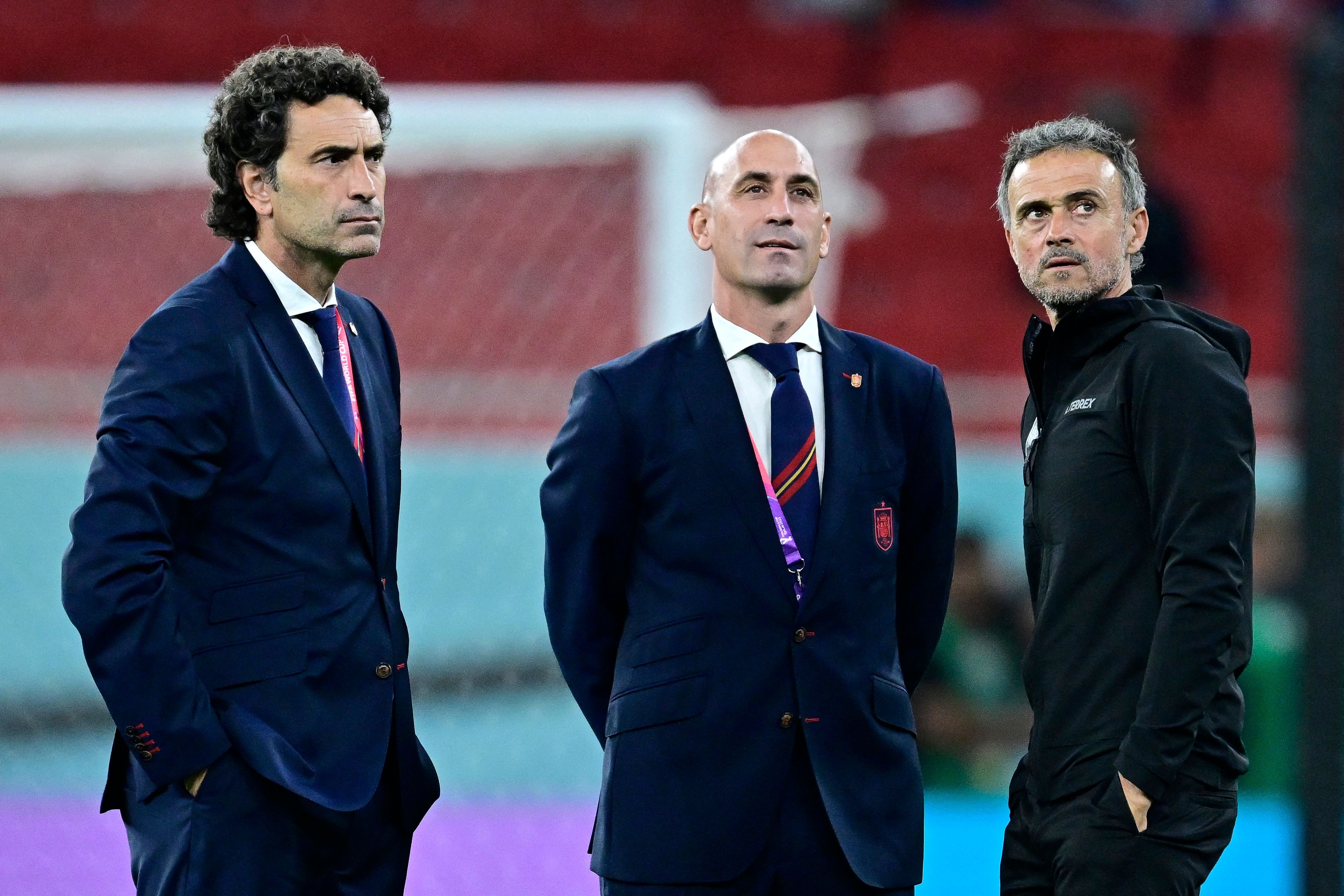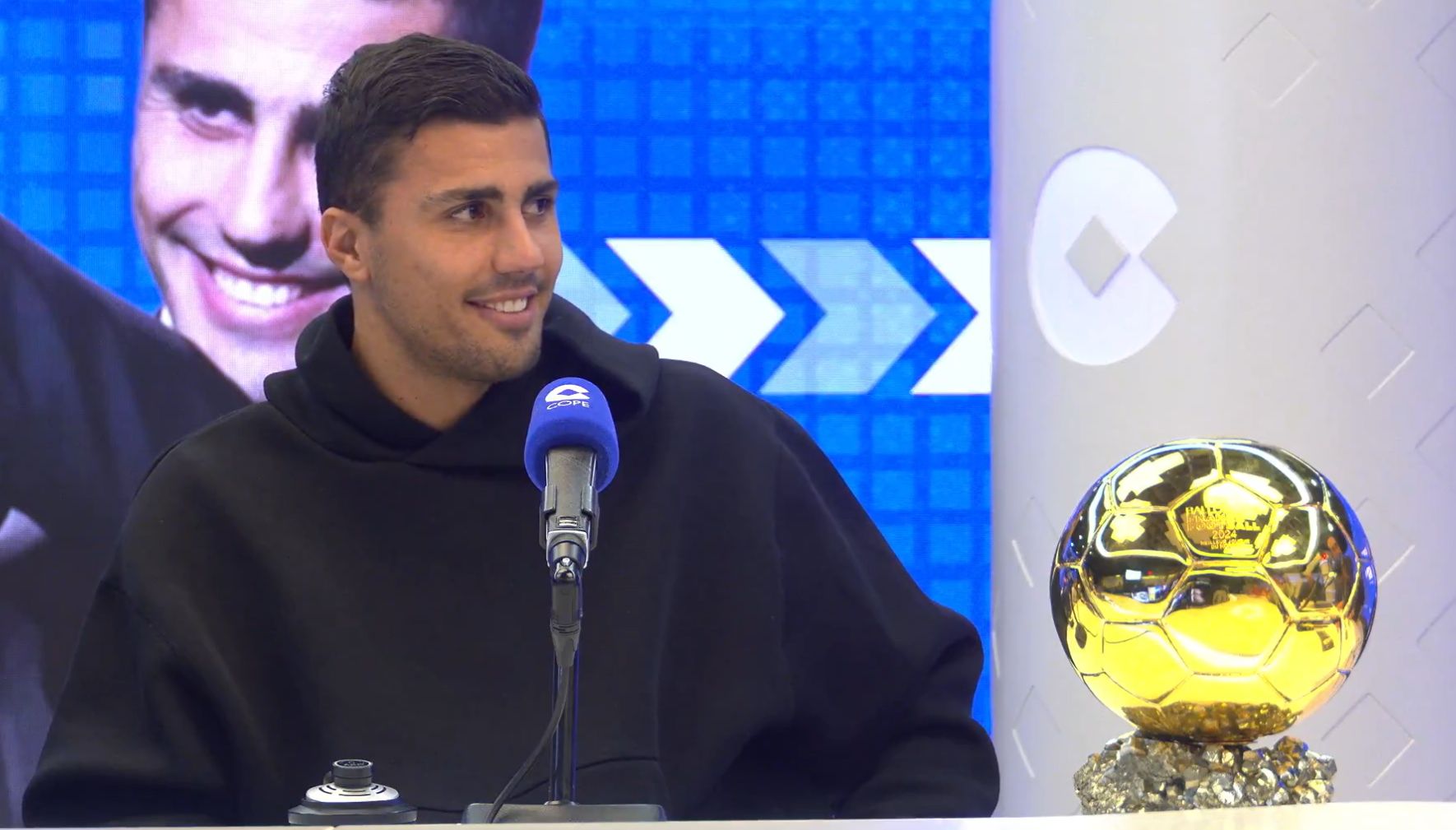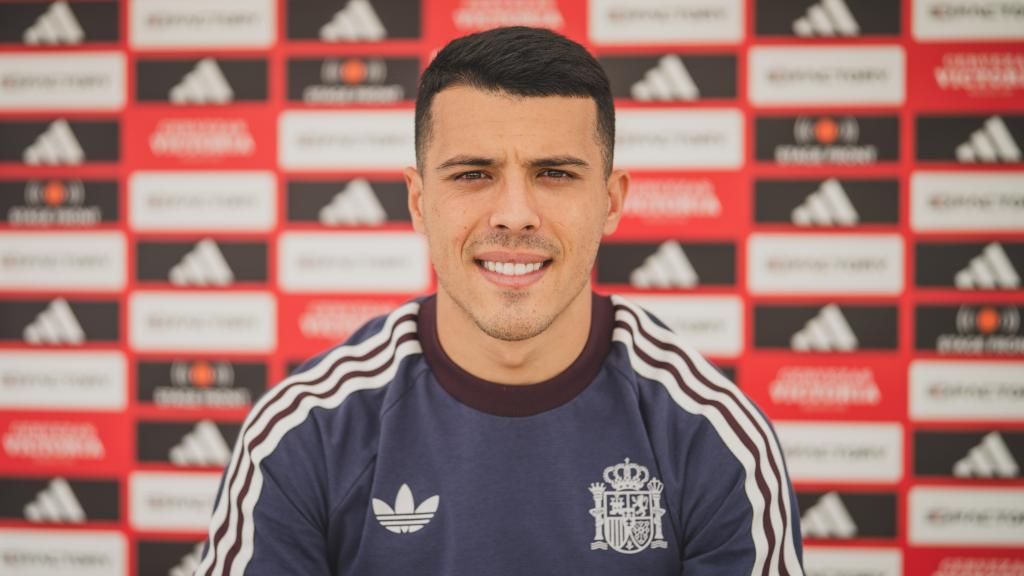Following the disastrous penalty shootout against Morocco, the RFEF had already come out, claiming “A decision will be taken in the cold.” They would take their time, or at least, that’s what the statement would have suggested. A few days later, another statement bombarded social media. Luis Enrique’s love story with the RFEF was over – some claim ‘Lucho’ resigned by himself – after all, his contract ended on the 31st of December. Others, however, privilege the theory that Luis Rubiales fired Luis Enrique.
Instead, Luis de la Fuente was appointed. He’s a familiar figure, having taken over one match in 2020 for the senior team. Luis de la Fuente is not a familiar name for most, outside of or within Spain. But inside the RFEF, and specifically for Rubiales, the president (and to some, the dictator), de la Fuente is a man to be trusted. He’s been leading the Spanish youth categories, winning titles with the under-19 and the under-21, with names such as Dani Olmo, now a regular first-team player. However, it’s also true that senior football hasn’t worked out much for de la Fuente, where he only lasted four months at Deportivo Alaves. But times are changing, and after leading the Olympics team to the final (only losing to Brazil), his chance has come: the company man is the now head figure.
His style of play, however, probably is one of the reasons. Though his teams have historically enjoyed a majority of possession of the ball (what a surprise!), he’s not afraid of a less patient build-up. He’s often preferred a de facto number nine, usually used as a target to dominate the box, despite having used Mikel Oyarzabal (Real Sociedad) as a false nine as well. His insistence on wide wingers could indeed see Spain’s senior team going more direct, for a less patient, 1000-passes-like build-up that became one of the major arguments against Luis Enrique. Déjalo fluir!
And in the same vein, against what led Spain to glory – from 2008 to 2012, the famous possession play that led La Selección to the World Cup and the Euros – a side that will live in the memory. Equally so, what made it so enjoyable, is what is now despised by a similar public – barely ten years later. Seeing Spain finish with above a thousand passes, would make one think that’s impressive. What however seems less impressive, is the lack of goals, too. It is true, that against even lesser opposition, Spain has rarely scored above two goals (The Costa Rica 7-0, obviously, being an outlier). It has sparked a public discussion: what do the fans want, and what do the players want? Are they similar, or are those divergent?
When Luis Enrique took over in 2018, Spain’s World Cup had been a disaster. Despair, despair is the word. The mighty Spain had just lost against the hosts. A fiasco that saw a change of coach just before the World Cup started, too. A guiding line under Luis Enrique had always been that the ‘Old Guard’ wouldn’t be heavily present under his guidance. And to a certain extent, that did happen – Sergio Ramos and Gerard Piqué weren’t exactly preferred, to the point that neither played during the Euros or the World Cup. Though Piqué’s declining form makes an argument for it, most remain critical of Lucho’s choice to not include Sergio Ramos in Qatar’s 2022 World Cup: Laporte is indeed accepted, but Hugo Guillamón was instead called up – only for Rodri to occupy his spot.
Without a doubt, the biggest critique, whether form the regular casual fan, or the most powerful media in Spain such as Marca and AS, remains Lucho’s personal choices when it comes to squad selection. A Barcelona-bias is often mentioned with regards to Gavi, Pedri, Ansu Fati, Eric Garcia and Alejandro Balde, but more importantly, it was the non-selections that riled up the country.
Sergio Canales, Thiago Alcantara, Borja Iglesias, Inigo Martínez are some of the ‘big names’ most wished for, and that the media regularly mentioned. Thiago is an interesting case – the media only started ranting when he was not selected, not when he was not playing despite being selected – an example of a ‘media hunt’. That these players were not selected is perhaps a disappointment, and a fair argument.
What is also true, though, is that said standards for Lucho won’t be the same for Luis de la Fuente. Because, at the heart of all the said issues, there is also a power play. Lucho, notoriously, does not care. He lives in his own bubble, and selects his own players, independent of the form. Unsurprisingly, this did not sit well. On the other hand, what did they expect when hiring Lucho? Food for thought.
That was a clear constant. Those controversial decisions include the likes of Canales, and to some extent Iago Aspas. He has been selected, but very rarely, especially since Spain need a number 9 more than ever. Some players were always preferred. This is the case of Gavi (selected ahead of many other midfielders, a month following his explosion into Barcelona’s senior team), Pedri (who arguably, did justify it), and others like Carlos Soler and Marcos Llorente.
His stubbornness was never a good trait for many, a sign of inflexibility. But what’s usually forgotten, is that this same guiding principle that restricted certain players from coming into the fold, gave Spain an identity again: possession play, that perhaps needed improvement, but that undoubtedly built a solid basis – a path that Luis de la Fuente will be expected to continue. It’s also what saw a united group, a group that is clearly thankful for Lucho’s work – verified Rodri’s interview with The Guardian, ahead of the World Cup. Still, the media hunt meant that Lucho, to their eyes, ‘divided’ Spain, instead of uniting it. Again, under the umbrella that Lucho has a Barcelona bias above all, that he hates Madrid.
That media hunt was ended by Lucho himself. To his eyes, the media was only an obstacle to communicating with his fans. Even as a player, his media feud was already noticeable, one that only evolved across the years. As such, the media was completely ignored, to the point where Luis Enrique set up a Twitch Stream during the World Cup. A more cosy, friendly Luis Enrique was seen, joking around, in the evenings of the World Cup in Qatar. It probably was a first in the history of the World Cup – and set the tone for Lucho’s battle with the media.
This is to not discredit the critiques – what many describe as Lucho’s downfall is really, a few of his own errors. If he was to choose his preferred core of players, that did not depend on individual quality, it needed to be justified. And when Spain lost to Morocco in the last sixteen – a heavily political clash in light of disputes over territory – it was seen as a humiliation. Still, coming back to football, in the game that cost Luis Enrique his continuity, the troubles were foreseeable.
Luis Enrique didn’t start with any wide winger (Dani Olmo on the left, Ferran Torres on the right, Marco Asensio in the centre), which also translated into no number nine, too – the only one, Alvaro Morata, arrived late. And against an organised, compact block such as Morocco’s – that proved its strength, drawing against Croatia (0-0), winning against Belgium (2-0), and finally, taking the game to extra-time and penalties. To many, Luis Enrique did not optimise Spain’s chances, instead, it seemed a 50/50 clash to many. Too many, as it turned out. It is indeed true that Spain created few goal-threatening opportunities before the extra-time, and extra-times aren’t known for being particularly thrilling. When Morocco defends centrally and Spain cannot take advantage of the wings – because Nico Williams was only brought on later, just like Morata – Spain found itself back in unfavourable trenches against Morocco’s guerilla tactics. And as expected, because of Spain’s lack of individual stars they never made it out of the ambush.
The biggest question and doubt around Luis de la Fuente is whether he has what it takes to make Spain progress? Spain haven’t won a single World Cup knock-out game in since 2010, and the patience is over. He’s supposedly more flexible, but also perhaps, less elaborate. Possibly better for international football, the future will tell. Whether names such as Mikel Merino, Canales or Alex Baena will be introduced is another question – as de la Fuente has worked with many of them in the past, he’s expected to introduce more and more names ahead of the Nations League (2023), the Euros (2024) and finally, the World Cup (2026).
Other names were also mentioned instead of de la Fuente, such as Marcelino (Ex-Athletic Club & Valencia). The fact that the RFEF also named Albert Luque, as their new sporting director, is perhaps telling. Both de la Fuente and Luque are known to be ‘yes-men’ when it comes to their relationship with Rubiales (which explains why de la Fuente is hailed as ‘the new captain’, ‘the relief’ in today’s front pages, whose political edge often bears its teeth. It is a set up to ensure he may toy around with Spain’s chessboard as he wishes. Time, as always, will tell whether de la Fuente is up to the task. By name, he remains a nobody to the wider public, and few are the people that would call him a clear upgrade. Ojála!
Image via AVIER SORIANO/AFP via Getty Images




